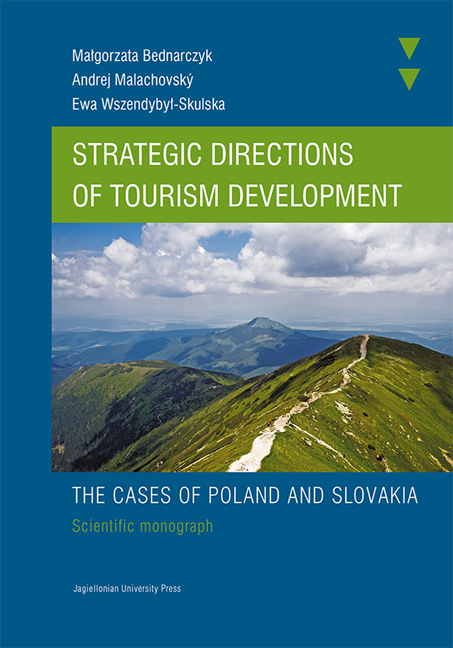Book contents
- Frontmatter
- Contents
- Introduction
- PART I European directions of strategic development of tourism
- PART II Strategic directions for tourism development: a case of Slovakia
- PART III Innovation as a key success factor of the tourism development strategy in Poland
- 1 About of innovation in tourism sector
- 2 Analysis of tourism sector innovation in Poland
- Conclusions
- References
- List of Figures
- List of Tables
- Appendix
1 - About of innovation in tourism sector
from PART III - Innovation as a key success factor of the tourism development strategy in Poland
Published online by Cambridge University Press: 10 January 2018
- Frontmatter
- Contents
- Introduction
- PART I European directions of strategic development of tourism
- PART II Strategic directions for tourism development: a case of Slovakia
- PART III Innovation as a key success factor of the tourism development strategy in Poland
- 1 About of innovation in tourism sector
- 2 Analysis of tourism sector innovation in Poland
- Conclusions
- References
- List of Figures
- List of Tables
- Appendix
Summary
The sector of toutism is the fastest growing sector of the global economy, as it is confirmed by statistical data of the World Tourism Organization (UNWTO) and World Travel and Tourism Council (WTTC), noting a steady and continuous growth in number of visitors and revenue from tourism after the World War II.
Tourism is undoubtedly an important and modern sphere of economic and social activity in many countries in the world, including Europe. Tourism development is a key driver that accelerates socio-economic development of a country. Its great importance is reflected in a high capacity to generate new jobs, improvement of the quality of life of local communities, and increase in competitiveness of the regions.
Poland is enjoying a growing popularity among tourists. The change in perception of the country by foreign visitors has been a positive change.
Moreover, Poland is a country which has not been strongly affected by the global economic depression in comparison with the traditional European tourism markets, i.e. Greece, Italy, Portugal or Spain. It does not mean, however, that the Polish economy has not been touched by the global crisis at all. Similarly to other European countries, the number of tourist arrivals has decreased, which resulted in some financial difficulties of tourism enterprises, mostly small or medium-sized ones.
For many years, the Polish economy has been focused on its efforts to change the image of the country in order to become attractive to tourism. As a result, both foreign tourists and investors are becoming more interested in Poland. An additional element that supports tourism development in Poland is European funds, of which Poland is the greatest beneficiary in the current programming period.
Changing tourists’ needs, a growing number of more diverse offers of the international tourism market, increasing number of competitors that are becoming more determined and aggressive in pursuing goals, and changes in the broad market environment (demographic, economic, socio-cultural, political, legal and technological changes), all these factors make it necessary to change the strategy of Polish tourism market, and thus, of the whole tourism economy.
One of the key directions taken by Poland in tourism development is the increase in competitiveness of products, entities and touristic regions.
- Type
- Chapter
- Information
- Strategic Directions of Tourism DevelopmentThe Cases of Poland and Slovakia - Scientific Monograph, pp. 89 - 124Publisher: Jagiellonian University PressPrint publication year: 2012



